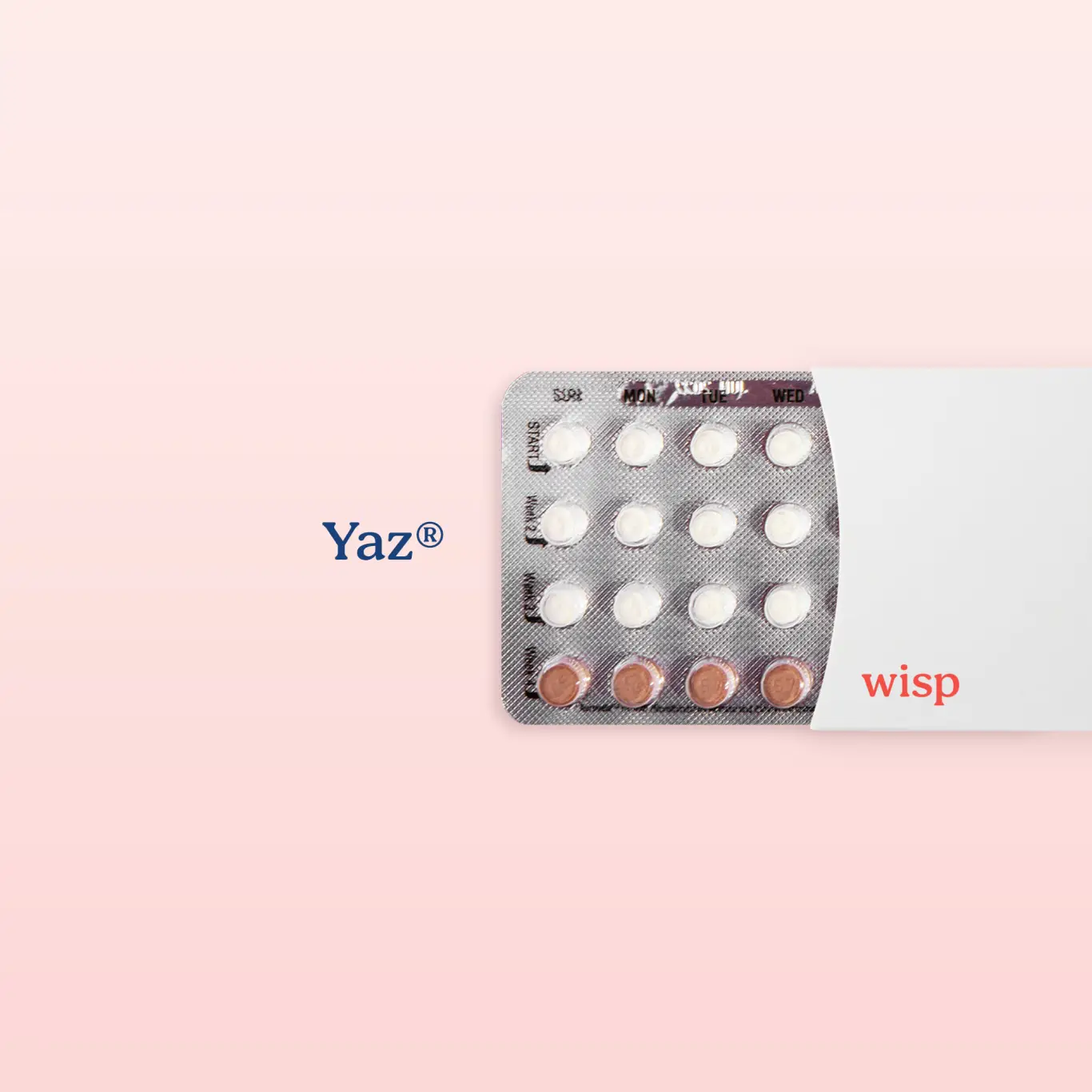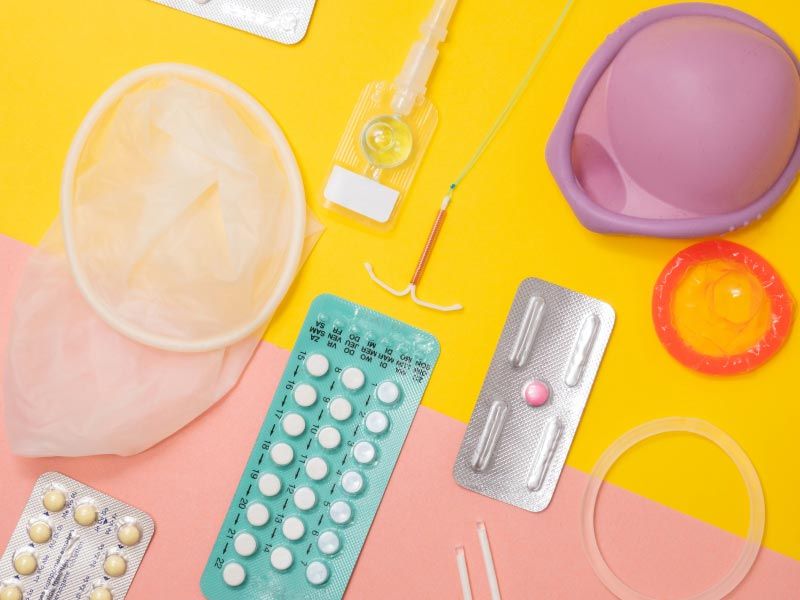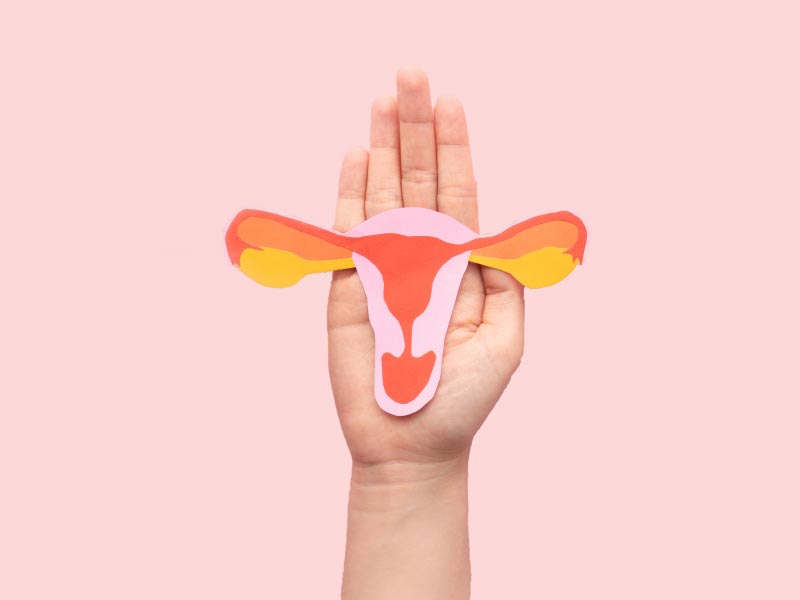
Why Are My Period Cramps
So Bad–and How Do I Get
Rid of Them?
By Simona Byler
August 27, 2024
Ugh, cramps. While it’s certainly possible to come to love and appreciate having a period each month, the cramps that come along with it… Well, they’ll always be painful. Period pain and cramps–and even migraines–are a monthly experience for many people who menstruate. But, they can vary in duration and intensity from month to month and change over time.
Science is still on the hunt to figure out exactly why some women have more painful periods than others. Whether you have mild discomfort or intense pain, understanding the basics of period pain, its causes, and the treatments available can help you manage your symptoms more effectively. From headaches to backaches to diarrhea, we’re here to talk about how to get some sweet, sweet period pain relief.
“My period cramps are so bad I can't move”
If you’ve ever found yourself curled up on the couch with bad menstrual cramps, you’re sooo not alone. Pain associated with menstruation is known as dysmenorrhea. Dysmenorrhea is extremely common and typically mild, but an estimated 10 percent of women experience pain intense enough to disrupt daily life (1). And since many people don’t seek out or are denied medical attention for period pain, the actual number is thought to be higher.
Typical period pain involves aching or throbbing in the lower abdomen that can spread or radiate to the lower back and thighs. For some, the discomfort stops there and is manageable with over-the-counter medication. For others, severe cramps can come along with:
- Nausea
- Diarrhea
- Vomiting
- Headache
- Dizziness
And if your period pain is regularly this intense, you might want to reach out to a healthcare provider to discuss your symptoms and explore treatment options—more on this below.
What does PMS stand for?
Okay, you might have heard the acronym PMS so often that you’ve totally forgotten what it actually stands for. If so, don’t worry! We’re here to start with the basics. PMS stands for premenstrual syndrome, referring to the combination of symptoms that happen before your period. And, before anyone questions it, let’s go ahead and say that PMS is really, really real.
Case in point: Almost 48 percent of reproductive-aged women experience PMS. Of those women, 20 percent have symptoms that are severe enough to impact their daily activities (2).
PMS symptoms are often described as “mild” and “tolerable.” But, even if they’re mild, the cramps, bloating, and emotional distress are still there. And when symptoms are less tolerable, PMS can greatly affect your overall well-being. If you have PMS, you’ll consistently experience a combination of symptoms, either emotional or physical, before each period.
Emotional and behavioral changes related to PMS can include:
- Irritability and angry outbursts
- Tearfulness and crying spells
- Depression or waves of sadness
- Increased anxiety
- Trouble sleeping
- Increased fatigue
- Low sex drive
- Changes in appetite or cravings
- Brain fog or difficulty concentrating
Physical symptoms of PMS can include:
- Body aches and pains
- Cramping and abdominal pain
- Headaches or migraines
- Breast tenderness
- Constipation or diarrhea
- Bloating
- Acne
If you’re experiencing moderate PMS symptoms, a great first step is over-the-counter medication. Nonsteroidal anti-inflammatory drugs (NSAIDs) like ibuprofen (Advil) or naproxen (Aleve) can offer some period pain relief and are easily available. We also recommend tracking your period and PMS symptoms month-by-month, so you know what to expect and can share this information with a doctor if your symptoms become more severe.

Delay Your Period (Norethindrone Acetate Tablets)
Starting at $39
Delay Your Period for up to 20 days for special events, competitions, or vacations. Not a form of birth control.

Yaz® Birth Control (generic)
Starting at $15
Similar to: Gianvi, Jasmiel, Lo-Zumandimine, Loryna, Nikki, Vestura

Delay & Vacay Bundle
$70
Press pause for up to 10 days on your period—perfect for romantic getaways, beach vacations, and anywhere else your heart takes you.
Why are my period cramps so bad?
Remember when we mentioned that period cramps are known as dysmenorrhea? Well, there are actually two types of dysmenorrhea: primary and secondary. Which type of dysmenorrhea you’re experiencing can help you understand why your cramps are so bad and lead you to some much-needed relief.
Primary dysmenorrhea
Primary dysmenorrhea refers to the cramps and pain that happen before and during your period. When you get your period, the blood you lose is from your uterus shedding its lining–called the endometrium. In order to shed its lining, the muscles in your uterus contract and tighten—ouch! And, all that painful contracting and tightening is caused by hormone-like chemicals called prostaglandins.
Women who have primary dysmenorrhea are thought to produce too many prostaglandins or to be more sensitive to prostaglandins. This is more common in women under age 30 and for those with heavy periods (1).
Period cramps that fall under primary dysmenorrhea are the more common type of cramps, as they’re caused by the natural contraction of uterine muscles. In this case, taking NSAIDs like Advil will often lead to period pain relief and allow you to continue with your regularly scheduled activities!
Secondary dysmenorrhea
Okay, when you have severe, debilitating period cramps that don’t go away with over-the-counter medication, you might be suffering from secondary dysmenorrhea. While the cause of severe period pain is sometimes unclear, it can happen due to an underlying health condition. Let’s take a look at some possible causes.
Endometriosis: Endometriosis is a chronic condition that happens when tissue–similar to uterine lining tissue–grows outside of your uterus. When this tissue breaks down, it can cause a number of symptoms, including severe pelvic pain and heavy or long periods.
Fibroids: Fibroids are growths that take up residence in and around your uterus. They can vary in size and, while not all fibroids cause symptoms, the ones that do can cause severe period cramps.
Adenomyosis: Adenomyosis happens when endometrium tissue starts to grow inside the muscles of your uterus. This can make your uterus grow in size and cause heavy and painful periods. ** Pelvic inflammatory disease (PID):** PID is an infection of your reproductive organs, often caused by untreated STIs like gonorrhea or chlamydia, or even from untreated bacterial vaginosis. PID can cause pelvic pain and make period cramps worse, so make sure to test for STIs regularly and nip infections in the bud!
How long do period cramps last?
How long your cramps last depends on your individual menstrual cycle and whether you’re dealing with primary or secondary dysmenorrhea. For primary dysmenorrhea, cramps might last between one and five days (3). You might begin to feel pain a few days before your period, or right when it starts. Due to the potential underlying causes of secondary dysmenorrhea, in those cases, cramps can last longer or happen at times other than during menstruation.
What to take for period cramps
Periods are a natural part of life. But that definitely does not mean that you have to suffer through cramps every month. There’s no need to disguise the pain you’re feeling, and no need to put up with discomfort because it’s “natural.”
So, with that in mind, there’s good news: When it comes to finding some period pain relief, different options are available! Let’s take a look.
Over-the-counter medication: NSAIDs like ibuprofen (Advil) or naproxen (Aleve) can help with period pain relief by reducing the production of prostaglandins–the chemicals that make your uterus contract and tighten.
Prescription medications: If over-the-counter meds aren’t cutting it, reach out to a healthcare provider to discuss taking prescription medications to relieve your period cramps. They can also decide if further tests are needed to determine if you have any underlying health conditions.
Hormonal birth control: Both birth control pills and IUDs can provide period pain relief, as they can make your periods lighter and shorter. That said, it might take a little trial and error to find the right pill for your system. One popular option is Yaz, a birth control pill that’s FDA-approved for treating premenstrual dysphoric disorder (PMDD).
Heat therapy: Putting a hot water bottle or a heating pad on your lower abdomen, or sitting in a warm bath, can help relax your muscles and ease period cramping.
** Lifestyle changes:** Limiting caffeine, alcohol, smoking, and salty foods has been shown to reduce PMS symptoms, including cramping. Similarly, reducing stress and exercising regularly can also help (4).
Period pain and cramps are no fun for anyone, but understanding the causes and available treatments can help you manage your symptoms and feel more in control of your body. So, whether you’re dealing with mild discomfort or severe pain, know that you have options! Our providers at Wisp are here to make sure period pain doesn’t interfere with your daily life.

